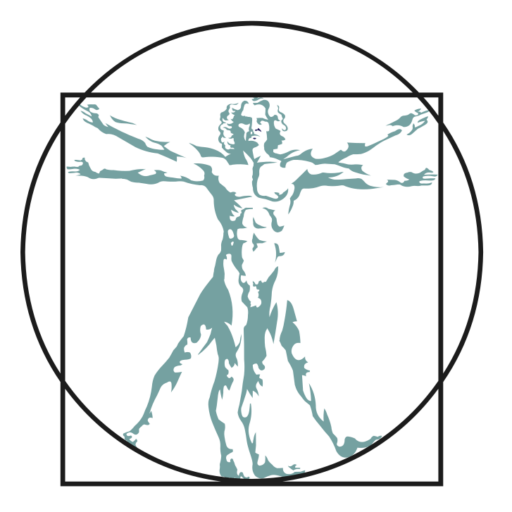I’ve had many clients come to me over the years requesting help with sciatic-type pain; either after having been diagnosed with “sciatica” or from assuming that it could be such. Unfortunately, it’s been made very clear to me that many people—the healthcare industry included—aren’t aware that discrepancies in certain muscles could mimic sciatica. I’m not at all saying that true sciatica couldn’t be the case, but my goal is to provide you with additional information to consider when it comes to the sciatic nerve, the muscles around it, and how PNMT can help you to become pain-free. First I’ll start off with the anatomy and then I’ll go into other details.
The sciatic nerve, which is the longest nerve in the body, is actually comprised of two nerves—tibial and common fibular (a.k.a. common peroneal)—which splits into two divisions, usually at the knee. Per Tortora & Derrickson (11th Edition), the nerve root origin is as follows…
- Sciatic: L4, L5, S1, S2, S3
- Tibial: L4, L5, S1, S2, S3
- Common Fibular: L4, L5, S1, S2
* (Click here for a dermatome chart: dermatome meaning the area of skin that provides sensory input to the central nervous system.)
As the sciatic nerve descends down the thigh, it sends branches to the hamstring muscles and the adductor magnus. At the knee, the distribution to additional muscles is as follows…
- Tibial: Gastrocnemius, plantaris, soleus, popliteus, tibialis posterior, flexor digitorum longus, and flexor hallucis longus. It then divides into the medial plantar and lateral plantar branches:
– Medial Plantar: Abductor hallucis, flexor digitorum brevis, and flexor hallucis brevis.
– Lateral Plantar: Quadratus plantae, abductor digiti minimi, flexor digiti minimi brevis, three lateral lumbricals, dorsal interossei, plantar interossei, and adductor hallicus.
- Common Fibular: Divides into the superficial fibular and deep fibular branches:
– Superficial Fibular: Fibularis longus and fibularis brevis.
– Deep Fibular: Tibialis anterior, extensor halluscis longus, fibularis tertius, extensor digitorum longus, and extensor digitorum brevis.
What could happen when the sciatic nerve is affected? Well, here’s what Tortora & Derrickson stated in their 11th Edition book…
Sciatic nerve injury, the most common form of back pain, is caused by compression or irritation of the sciatic nerve. Pain may extend from the buttock down the posterior and lateral aspect of the leg and the lateral aspect of the foot. It may be injured because of a herniated (slipped) disc, dislocated hip, osteoarthritis of the lumbosacral spine, pressure from the uterus during pregnancy, inflammation, irritation, or an improperly administered gluteal intramuscular injection.
To take it a step further and per my Precision Neural Mobilization training manual, a normal response from the sciatic nerve during a deep stretch, for example, could result in a sensation down the posterior thigh which may extend into the calf and foot. On the other hand, there are indications and causative factors that could result in abnormal responses. They are as follows…
- Sitting for long periods
- Sitting on a hard edge
- Sciatica
- Head or neck pain
- Ankle sprains
- Repeated leg crossing
- Tight socks, casts, splints
- Tight shoes
- Repetitive ankle sprains
- Sitting on ankles with flexed knees
- Exercise-induced compartment syndrome
- Running shoes without arch support
- Tight ankle bracelet, sustained compression
- Plantar fasciitis
- Tarsal tunnel syndrome
- Anteriolateral leg and foot pain
- Achilles tendinitis
- Heel pain
Now back to some muscles and PNMT….
The gluteus minimus, piriformis, and hamstrings are a few muscles that can mimic sciatica. Trigger points (click here and here for previous posts on TrP’s—and please note that the muscles below, in bold, link to webpages that show TrP referral patterns) in the gluteus minimus can refer pain all the way down the side of the leg; usually stemming from the anterior fibers. TrP’s in the piriformis can send pain from the buttocks down the back of the thigh; however, the pain doesn’t go past the knee—it is also well known for its ability to entrap the sciatic nerve, so any tightness will produce sciatic symptoms. TrP’s in the hamstrings can also send pain down the back of the thigh. Travell reports that there are “rare” cases where the sciatic nerve is entrapped between two heads of the hamstring attachments on the ischial tuberosity; however, this study by Kari Saikku, Jarkko Vasenius, and Pekka Saar from the University Central Hospital in Helsinki, Finland found that this sort of entrapment “is not extremely rare.”
At the end of the day, muscular discrepancies within the muscular-skeletal system can in fact mimic sciatic-type symptoms—and I want you to be aware of this, especially if you have tried every other option out there to no avail. There are more holistic and non-invasive approaches to treating pain and dysfunction, and PNMT is a prime example. By taking just a few measurements to see how a person’s body is aligned, a trained therapist can ascertain what muscles are pulling where, and treat the affected muscles to help the individual to become pain-free again.
Sounds awesome, doesn’t it?
As always, I hope you find this information informative… And more importantly, HAPPY NEW YEAR!
* * * * *
“Neutral balance alignment is key to becoming pain free!”™ ~ Me


this info was very helpful. When I went to Nicole on 8.15.13 I was in such pain. Yes i am challenged since 2004 with Sciatica/right side. I had been satisfied going to my Chiropractor (Dr. Kent Long) and my massage therapist (Darlene Snyder) – yet when I went to see Nicole, I felt better than I had in years. Thanks so much Nicole Ftacnik! And and even bigger thanks to Mark and Brandy (Herres) for recommending Nicole!